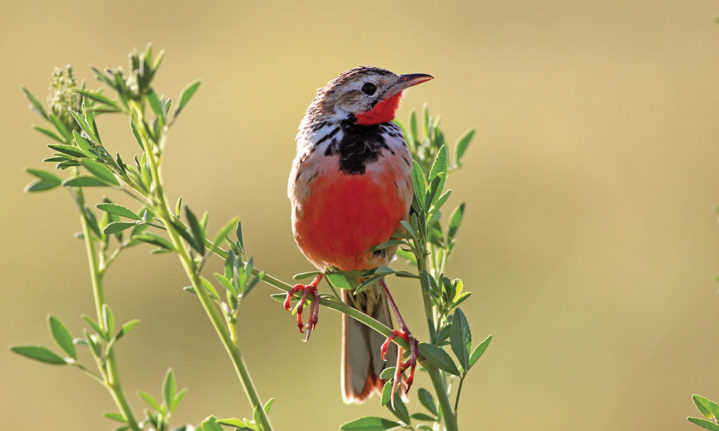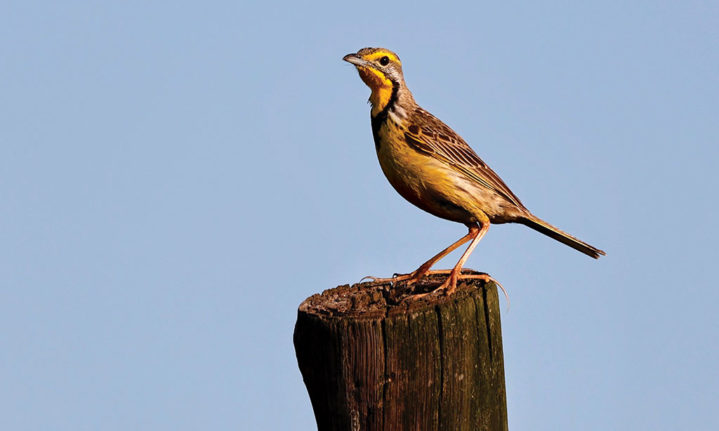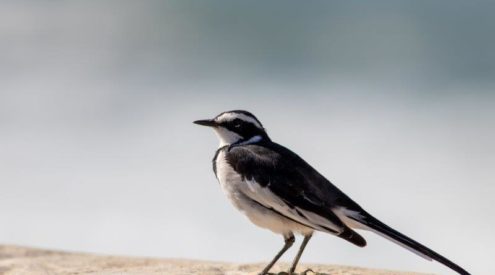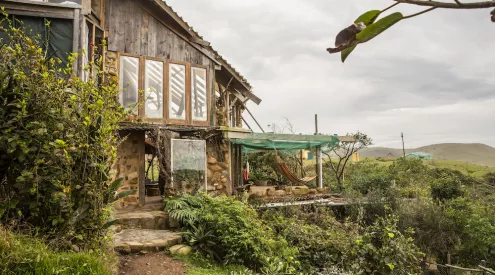iSimangaliso wetland park is a lure for twitchers on the hunt for elusive birds. Rob Ingle had his work cut out for him on his quest to find one of the rosy variety.

Photo: Goh Su fen in Kenya
I recently spent 10 days in iSimangaliso trying to track down some LBJs (little brown jobs) that I’d failed to see in the past. While the Cape and yellow-throated longclaws are widespread here in South Africa, the rosy-throated longclaw is restricted to flooded grass lands on the northern Zululand coast, and this species was high on my list of target birds.
Southern Africa has a high diversity of LBJs, a collective name for small, nondescript brownish birds that are very difficult to identify. Prominent among these are the larks and cisticolas which are often easier to distinguish by call than appearance, if you have an ear for that kind of thing. Viewed from behind, the longclaws appear to fit into the LBJ collective, and they are members of the same family as pipits, which definitely do. However, when they turn around, you would be forgiven for thinking that they had just participated in a colour run event. The three species present in Southern Africa are easily distinguished by their vivid colours: orange and yellow for the Cape longclaw, yellow for the yellow-throated long hind claw and bright pink for the rosy throated longclaw. All three species favour grasslands, and it is thought that the remarkably long hind claw on their feet, which gives them their name, may help them walk on grasses.

Nibela Lake Lodge is an ideal base for birding forays into iSimangaliso’s wetlands and floodplain.
The longclaws are an excellent example of convergent evolution – where two organisms not closely related evolve to look highly similar because they face similar environmental conditions. In the plant world, the cacti of the Americas and the euphorbia of Africa are a well-known example of convergent evolution, but the African longclaws also have an American lookalike, the meadowlarks. The resemblance between the yellow throated longclaw and the eastern meadowlark is truly remarkable yet they are only distant relatives, the longclaws belonging to the pipit family, and the meadowlark to the blackbirds. Their independent evolution of similar plumage and behavior presumably reflects that both nest in grassland and forage for insects on the ground. Interestingly, meadowlarks lack the long hind claw yet are quite able to move freely over grasses.
I’d heard that one prime area to find the rosy-throated longclaw is the floodplain of the Mkuze River where it enters Lake St Lucia, and when we arrived at nearby Nibela Lake Lodge, I was encouraged to see an enormous photo of this species, which the receptionist assured me had been taken locally. My confidence increased when the manager told me they had a 95% success rate with this species on trips to the floodplain. What could possibly go wrong? Well, firstly the wind, which ramped up from absolute calm to a near gale by the next morning. It was also rather hot by the time we arrived on the floodplain, where the next problem became apparent: the vast area of grassland there.
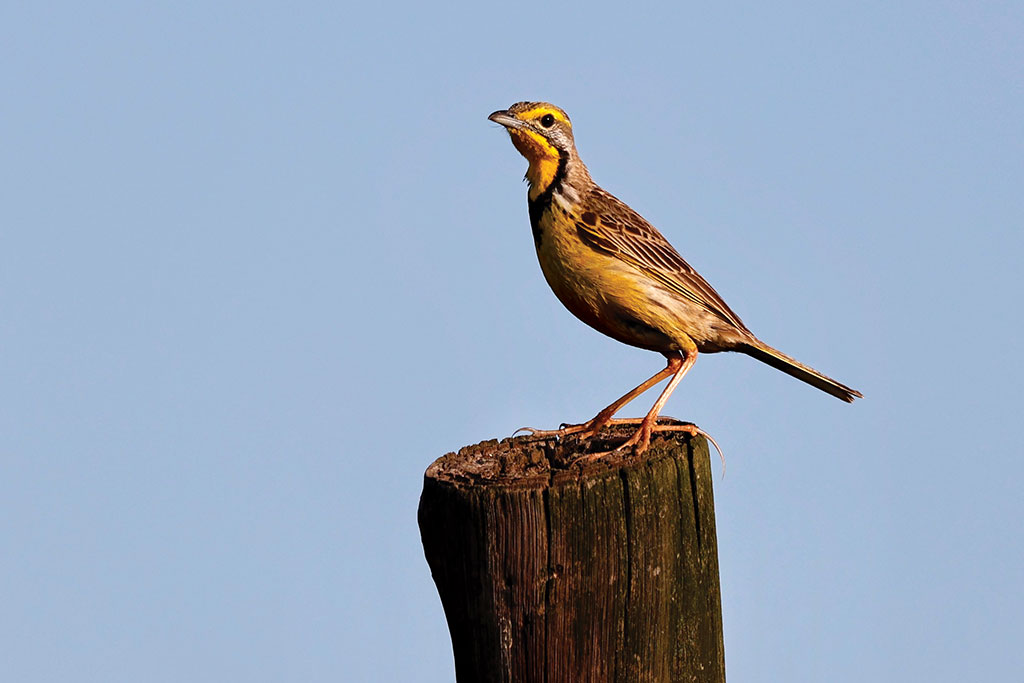
The remarkable appendage that gives species its name can be seen on this yellow throated longclaw. Photo: Sarah Crone
Our guide, Khumbulani Ngubane, offered some reassurance; we didn’t need to search the whole area, just the moist grass along the drainage channels. We duly set off into the teeth of the gale, the few LBJs that we flushed being blown miles away as they took flight. After 15 minutes of scanning the area through binoculars while avoiding the numerous large brown ‘gifts’ deposited by the cattle grazing there, we had our first sighting of a longclaw. Unfortunately, it was facing away from us into the sun and, as all three species occur here, a view from the rear was never going to cut it. There was no cover to mask our approach and it flushed and was blown into the distance without ever revealing its front.
For the next 30 minutes we searched without success until I could see from my partner’s face that she’d had enough of this gale. We circled around, and just as we got back to the truck another longclaw appeared. This time the bird was facing us, revealing its almost luminescent pink front. Result! Unlike the first bird, this individual was completely unfazed by our presence and walked around feeding right in front of us. Absolutely spectacular, and without doubt the birding highlight of the trip.
While I can’t say I had similar success with the other birds I was looking for, it’s always good to have an excuse for a return visit. Not that any is needed. The 1.3-million-hectare iSimangaliso Wetland Park encompasses an incredible diversity of terrestrial and marine habitats including sand forest, coastal dune forest, swamps, coral reefs, deep marine canyons and endless sandy beaches as well as a system of lakes. Lake St Lucia is the largest freshwater lake in South Africa, yet only one metre deep on average, allowing the hippos to walk along the bottom with ease. Add in the Big Five, some 525 species of bird, including important populations of many water-birds, nesting loggerhead and leather-back turtles, the mysterious coel-acanth and the annual humpback whale migration and it is obvious why this outstanding area was the first in South Africa to be declared a World Heritage Site. The name iSimangaliso means a miracle or a wondrous place in Zulu. I couldn’t agree more.
Feathery Facts
Although the Cape longclaw has the widest distribution in Southern Africa, it is the only longclaw species endemic to this region. Southern Africa is a lark hotspot with 31 of the world’s 98 species present, and 16 endemic to this region. Several of the endemic larks have tiny ranges, like the dune lark which is found only in the sand dunes of the Namib Desert between the Koichab and Kuiseb rivers and has never been observed drinking.
See For Yourself
Robert’s birding trip was organised by NONOPHELA TRAVE. Nonophela creates tailor-made packages to South Africa, Botswana, Zimbabwe, Namibia, Mozambique and Rwanda. 078 389 3010, nanaphelatravel.com
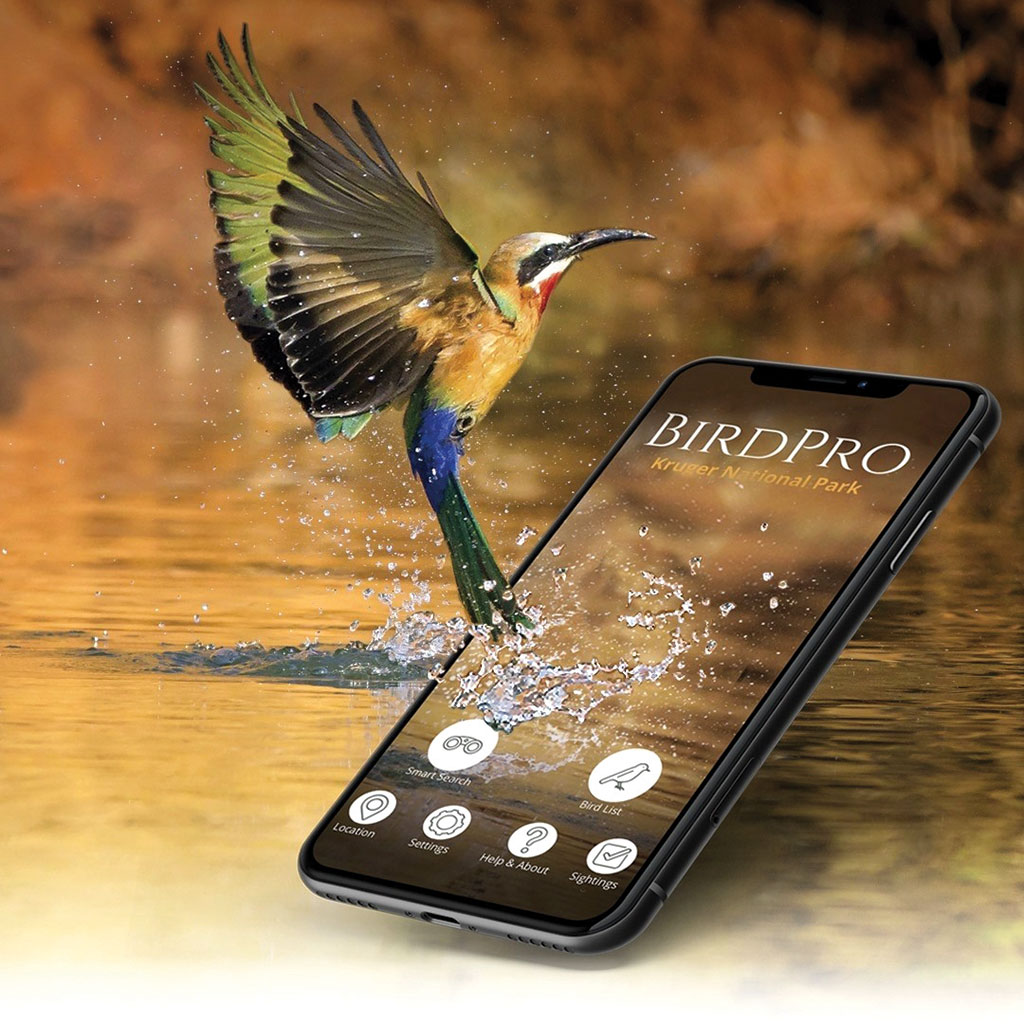
News
BirdPro, an app for bird watching enthusiasts, was awarded the Most Innovative Solution at 2020’s MTN Business App of the Year Awards. The app is a vast source of information, with over 6 500 images of birds and over 1 BOD clear bird calls. Names of birds are available in 16 languages, including all native South African languages as well asmany European languages. App developer Herman van den Berg says he wants to assist in ‘combating the deterioration of biodiversity in South Africa and ultimately the world, and what better way to do it than helping people identify and appreciate what we have around us’. Birdpro is endorsed by Birdlife South Africa and is available on the App Store and Google Play.









